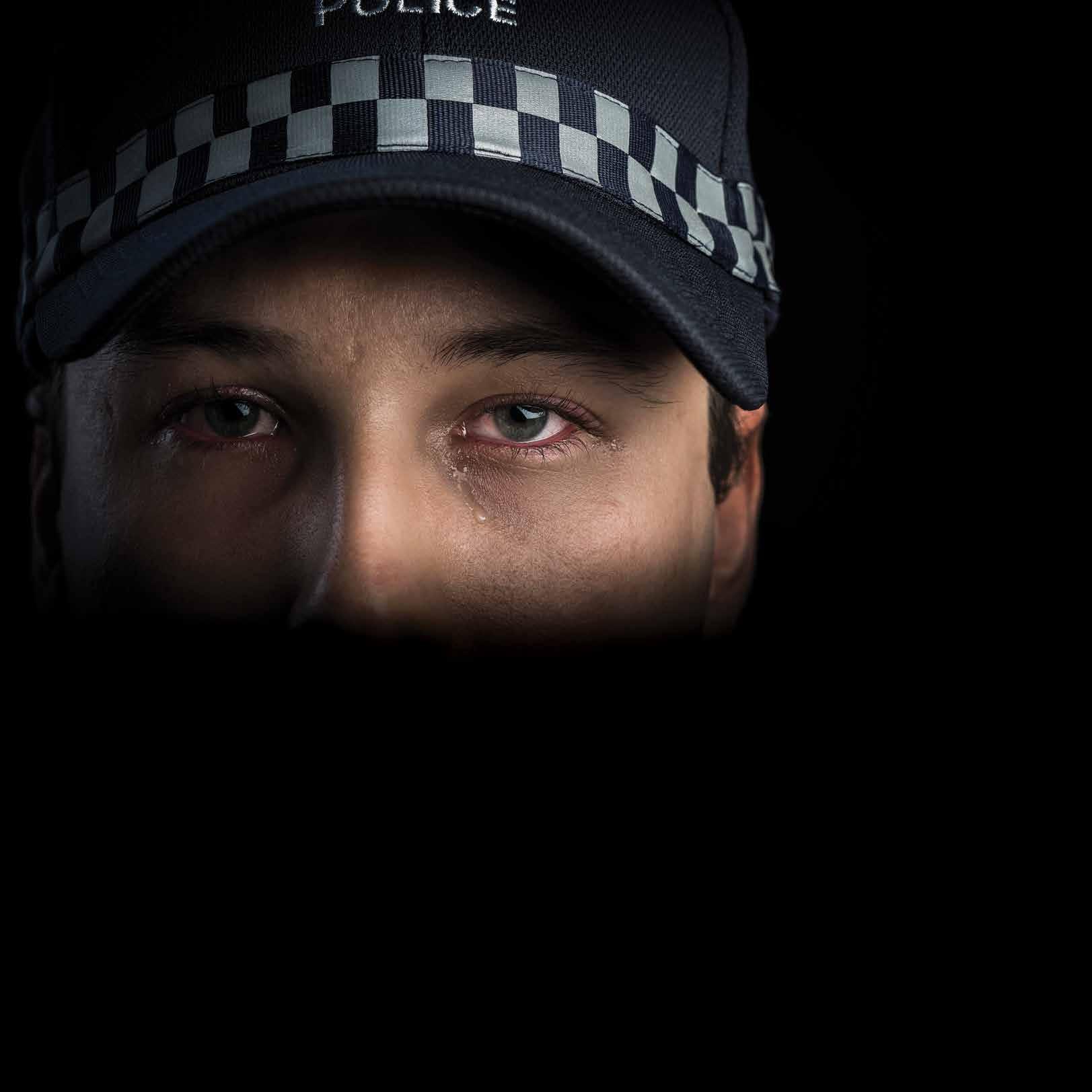
8 minute read
Police History: Paul Foelsche
PAUL FOELSCHE: THE FIRST NORTHERN TERRITORY POLICE INSPECTOR
BY JOHN PINI
This article was first published in the March 2014 issue of Northern Territory Police News
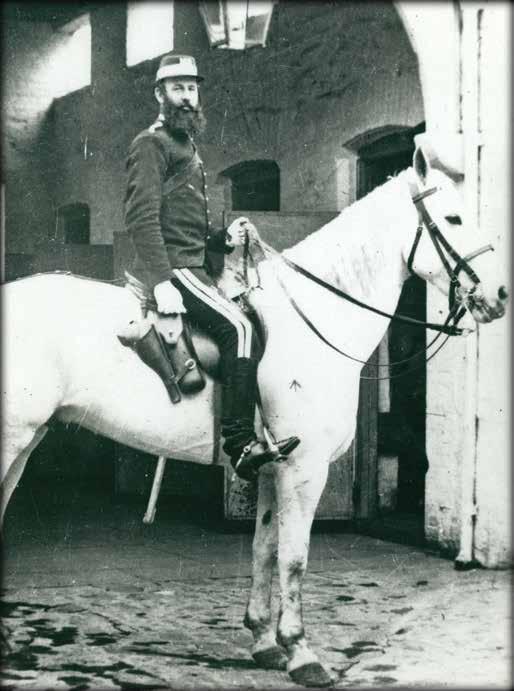
Paul Foelsche while serving as a Mounted Trooper in the South Australia Police.
Before the establishment of a settlement at Palmerston in Port Darwin in 1869 there had been several failed attempts to establish settlements.The security and policing for them had been carried out by military personnel in the main and the appointment of a South Australian Mounted Police Corporal named Paul Heinrich Matthias Foelsche as the first Sub –Inspector of Police in the Northern Territory was the real start to the history of the organisation we serve today. On the 31st of January we commemorated the 100th anniversary of the death of Paul Foelsche who at that time had lived 44 years in the NT and led the police force for 34 of those years. Foelsche was an impressive character who during his life had been a soldier, policeman, gunsmith, dentist, gaol keeper, naturalist, photographer, anthropologist, horseman, Member of the Trade Board, Inspector of Taxation, Curator

of Convicts Estates, visiting Judge, Trustee of the Methodist Church and foundation member of the Masonic Lodge in Darwin – an impressive portfolio by any standards. Foelsche was born in the village of Moorburg on the River Elbe near Hambourg in Germany in 1831 the son of two generations of rope makers. On reaching adulthood he joined the Prussian Hussar Cavalry, then involved with territorial disputes with the Danes, and he began to develop horsemanship and other skills he would later bring to the Territory. Aged 23 he migrated to Adelaide as an economic refugee aboard the brig Reiherstieg in 1854 on a 127 day voyage. Initially following the rush to the Victorian goldfields, he joined the South Australia Mounted Police in 1856. He was posted to Strathalbyn 60 kilometres north east of Adelaide where he helped establish the first police station and made a name for himself.

Foelsche took up photography while in Strathalbyn and took this self-portrait in front of the police station which he helped develop.
After initial rejection his application to be married was approved and in 1860 he married Charlotte Smith, the 20 year old daughter of a local carpenter. As a result he joined the Wesleyan Methodist Church she attended and soon after had the first of two daughters, Rosie Emma in 1860 and Mary Jane in 1863. Foelsche was demoted once due to financial cutbacks and restructuring but was regarded as a very capable and efficient member and was promoted to Corporal in 1867. When the settlement of Palmerston in Port Darwin began, following the survey by George Goyder and his party in 1869, Foelsche was given a substantial promotion to Sub-Inspector and a mission to protect the settlers in this new town in the north. Previous settlements had substantial difficulties following conflict with the Aboriginal inhabitants of the areas they chose.
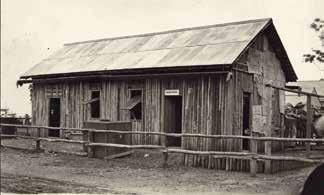
Foelsche sailed aboard the barque Kohinoor arriving in January 1870 and his family did not join him until a year later. The Northern Territory Police Force was not a separate entity and Foelsche still reported to his superior officers in South Australia and to the local government resident. Foelsche had five troopers with him when he arrived and a sixth was added soon after. With a lack of available workers the police were instructed to construct their own station which resulted in some disquiet. The following years police cells were also built to accommodate the need to hold prisoners in what was still an untamed Territory. Soon gold was discovered and the population of the top-end grew quickly especially with Chinese miners and like many mining areas opium trading and gambling dens became issues for the local police.
The 1870 Police Station and 1871 Police Cells – both taken by Foelsche.
Foelsche was an impressive character who during his life had been a soldier, policeman, gunsmith, dentist, gaol keeper, naturalist, photographer, anthropologist, horseman, Member of the Trade Board, Inspector of Taxation, Curator of Convicts Estates, visiting Judge, Trustee of the Methodist Church and foundation member of the Masonic Lodge in Darwin – an impressive portfolio by any standards.
There is not enough room in this article to do more than scratch the surface of his extraordinary career. Foelsche was a great pioneer and contributed massively to the early development of the Territory we enjoy today. This is not to glorify or endorse everything that Foelsche, or indeed other police or early settlers, did during a period of substantial tension and conflict but it is important to recognise that they, like us, are products of our time. With the benefit of hindsight and decades of social enlightenment much of history does not live up to the standards we would expect today and I intend here only to acknowledge such failures and not to dwell on them. Being a keen photographer I find one of the most fascinating of Foelsche’s achievements is the prolific photographic archive he left behind as part of his legacy. At a time when there were few photographers in Australia let alone the Northern Territory he preserved moments in time that provide incomparable windows on the past. Foelsche had a great eye for composure and it was matched by his technical skills. Photography in 1870 was not like today. It was necessary, when conducting field trips, for the equipment to be carried around in a cart.
Foelsche took photos of plants and collected samples. He discovered a new species of eucalypt and when his samples were delivered to the noted botanist, Baron Ferdinand von Mueller, at the Melbourne herbarium, resulted in Eucalyptus Foelscheana being named after him. His images of industry were used to promote investment in the Territory. Foelsche also took an interest in Aboriginal people and their culture and took many photographs and collected artefacts from the Victoria River to the Roper River. At Port Essington, to his surprise, he found the Iwaidja people were still able to understand English from their interaction with the British who attempted to establish a fort there between 1838 and 1848. Foelsche also recorded words in the Aboriginal languages he encountered and collected a range of objects which he provided to the museum in South Australia.
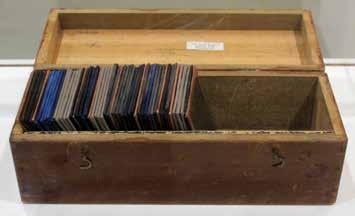
Collection of glass slides produced by Foelsche currently displayed at the NT Library on loan from the Museum and Art Gallery NT.
Foelsche’s photos were displayed in Paris, Philadelphia and Calcutta. In 1877 he was officially requested to obtain images for the Paris exhibition the following year. He describes how his wagon was loaded with a camera, large tripod, portable darkroom and chemicals. After the long exposure necessary, which required the subject to remain still, the photographer would need to mix chemicals to develop the glass plate negatives which took nearly an hour. Currently the Northern Territory Library has an exhibit featuring artefacts, photographs and details relating to Foelsche and his family on display. One panel fully details the complex process of creating a print using the wet plate process and glass negatives. It is a far cry from the simplicity with which we can take images today although it is quite surprising to see that the resolution of these images is superior to all but the high end professional photography of today. Foelsche became a Freemason while at Strathalbyn. He was one of the founding members of the Port Darwin Lodge and became its first Master in 1897. Later “Lodge Foelsche” would be named in his honour. Each year the lodge holds a memorial service at his graveside and this year, being the 100th anniversary of his death, it was a special event. Members of the Fannie Bay History and Heritage Society and students from Darwin High School added colour to the event by dressing in period costumes and despite being driven indoors by the monsoonal rain “Lodge Foelsche” members provided refreshments for those attending, led the ceremonies and provided an impromptu historical talk. Charlotte Foelsche died in 1899. Both of the Foelsche daughters married and eventually moved away from the Territory. In 1903 Foelsche took leave for the 12 months pending his retirement. He was awarded the Imperial Service Medal to recognise his 34 years of work for the Northern Territory community. Paul Foelsche died on the 31st of January 1914 from gangrene, senility and arteriosclerosis, just a few months before his homeland and his adopted country would be at war. He was buried in the old Palmerston pioneer cemetery on Goyder Road along-side his wife’s grave. Paul Foelsche was a Territory Pioneer who left an amazing legacy. Apart from the plants named after him a mountain, river and the Darwin street where the NT Police Association office is located all bear his name. After leading the NT Police through the tumultuous first 34 years of existence Foelsche well deserves the recognition given to him each memorial day.
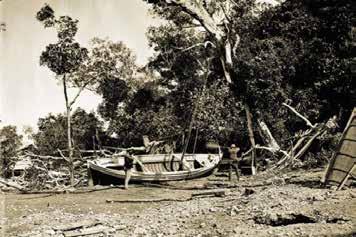
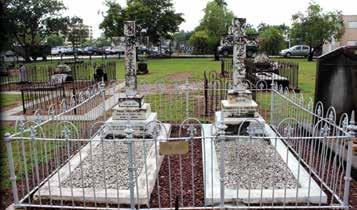
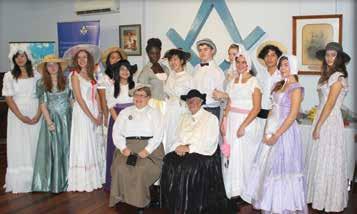

The graves of Paul and Charlotte Foelsche at Goyder Road.

Members of the Fannie Bay History and Heritage Society and students from Darwin High School.


A MENTAL HEALTH ISSUE DOESN’T MEAN YOU’RE SOFT.
IT MEANS YOU’RE HUMAN.

